I assembled this mini tesla coil kit and the instructions say to plug it into a power source that's 15-20v 2amps. I'm just wondering how do I do that? As in how do I make something that produces this specific current? All I have is batteries. I tried looking it up but it mostly comes up with calculators for amps and things 
2 Answers
Considering "power supplies" are generally referring to constant-voltage variable-current supplies, the current your device is referring to isn't what it needs to dump all the time guaranteed - it just means the maximum.
The same goes for when you find a power supply, e.g. one that says "24V 5A Power Supply". It doesn't dump 5A into a load all the time (although that does exist, a constant-current variable-voltage power supply, I've made a 240W one for a Peltier control system), it just means that this "voltage source", if you will, can supply 0-5A depending on the load.
So, you just need to find one that can support up to 2A. One that says 3A, 4A, 5A, etc. will be just as suitable.
Don't worry - a lot of people don't realise this. I'm an electronics engineer now, but only 8 years ago I was confused reading cigarette car charges - "How does this thing supply 5V AND 1A at the same time? Doesn't the current depend on the voltage?" was a question I always thought to myself, until I got my degree.
As for how to actually go about this - you say you have batteries. These probably won't be suitable, except maybe 2 x 9V batteries in series. Best to do would be to use a power-point outlet, with a proper wall wart power supply. Here is one on Ebay that is within the voltage you need: https://www.ebay.com.au/itm/Plug-In-Switch-Mode-18V-2A-DC-Regulated-Power-Supply-ErP-Comp-36W-UK-Wall-Wart/322761626532?hash=item4b261793a4:g:t9IAAOSwP4ZZwYy~
That one isn't very cheap, so I would shop around.
- 1,610
- 1
- 10
- 19
You seemingly have no studies of the laws of the electricity. I mean Ohm's and Kirchoff's laws at first. You also have no proper intuitive image what all those quantities (voltage, current, power, resistance etc...) qualitatively mean.
At first you should know that voltage is like pressure which puts the current to flow in wires and through the components. The current (=amperes) depend on the applied voltage and how the parts happen to resist the current.
A battery or power supply try to produce a certain voltage. The ampere rating of a battery or power supply is a limit how much amperes they can supply to a connected load without losing the voltage.
You need a power supply or battery that can output 2 amperes without dropping their voltage to lower than 15V. The voltage must not rise over 20V without a load.
A laboratory power supply designed to output 20V when the taken current is 2A or more can meet the spec easily, probably the voltage stays the same (in the adjusted value) swinging only few millivolts when the loading changes between 0...2A.
A battery is not so sure due the high variety of their specs. I recommend you to stay far from rechargeable batteries without proper knowledge, because it's too easy to cause a lethal explosion or fire with them. Lab power supplies have protection against short circuits, but rechargeable batteries have not. They can explode or make your wires white hot in a second.
Alkaline batteries (not rechargeable) are a safe option. Their problem is that small ones cannot supply 2A without losing their voltage substantially. If you connect 10...13 pieces of IEC LR20 size 1,5V cells in series you can expect short (one minute) experiments to succeed several times before the batteries get too worn out to keep the voltage.